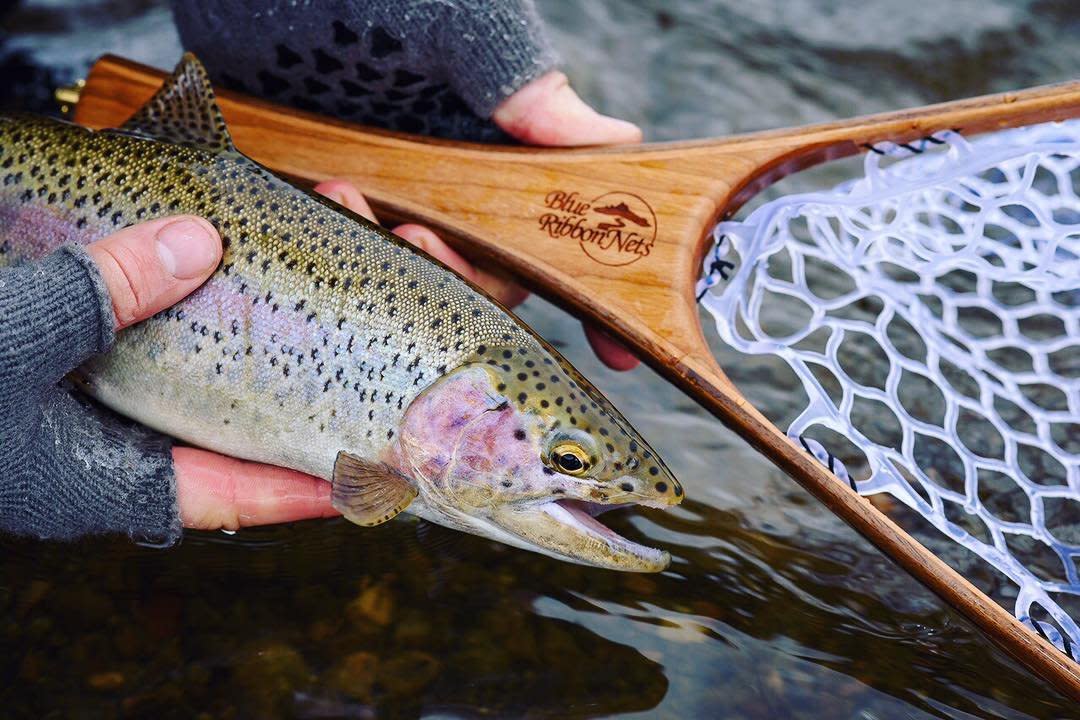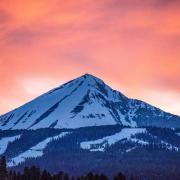Big Sky skiing is epic; in fact, it’s the Biggest Skiing in America. But some days, the call of the river is greater than the call of the mountains. Most people don’t think about fishing during the winter months in Big Sky, but trust me, you should. Southwest Montana offers some of the world’s best fly fishing, all year long. Some people think I’m crazy when I tell what I did with my day as they’re recalling tales of record snowfall and a great day of skiing on the mountain when I say “Cool, I went fishing today!” There’s nothing I love more than spending time on the Gallatin River during a bluebird day in winter. Sure, parts of the river are frozen solid, or the snow is so deep it makes it hard to find a way to get to the river. But there are plenty of fishing spots along the Gallatin to hit up for winter trout slaying.
First of all, dress warmly; a day on the river during the winter can present sun, wind, rain, snow and sleet, all in an hour’s time. I dress in layers as if I were going skiing, and then put on my waders, and then a warm winter coat or jacket on top. Hand, and especially foot warmers are lifesaving when you’re spending hours with your feet in the cold water.
Your best bet is to check with one of the many local fly shops in and around Big Sky before you head out for a day on the water. They are open year-round and there is always someone who is anxious to promote winter angling, share a few tips of the trade and give some hints about where to fish that day. It’s pretty obvious that there is not a lot of bug activity during the winter months in Big Sky. Winter fly fishing requires nymph fishing, not dry flies. Hit the deep holes and bounce some bugs along the bottom of the river.
Small flies, in the 18-22 size range are your best bet. My winter fly box is filled with Blue-Winged Olives and golden stone midges; also the zebra pattern can be effective. But, the surest trick for success is the old “bacon and eggs” trick. Grab a San Juan worm (I’ve had most success with the red ones, but there are orange and purple too) and a salmon egg pattern. Tie them with about 14-16” in between and put a small weight in the middle of the flies. I mean, come on, who doesn’t like bacon and eggs?! Trust me, this works.

Oh hey, semi-spring! 🌱
.
.
.
#buylocal #flyfishing #handmade #flyfishingnets #montana #madeinmontana #blueribbonnets #bozeman #bigskymt #flyfishinglove ...
A few other things to keep in mind. Don’t feel like you need to get out on the river at the crack of dawn, because unlike the warmer summer months when the fishing is best early in the day, trout are more active during the middle of the day in the winter. Also, bring a change of clothes to keep in the car. Falls happen in the summer, and believe me; they happen even more in the winter when you’re navigating snow and ice. It’s a good idea to have a dry set of clothes with you in case you take an accidental swim. Most importantly, treat the trout with care. Keep them in the water as much as possible during the catch and release process, as cold air can potentially freeze the fish’s gills and damage their protective layer of slime.
So go on, be brave, be bold and hit the river a couple of times during the winter. Your skis will be there tomorrow and that majestic mountain isn’t going anywhere either.
See Also:

